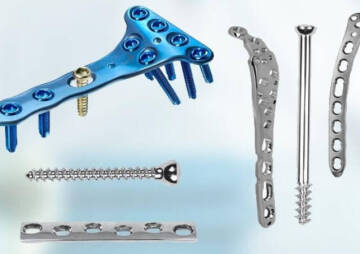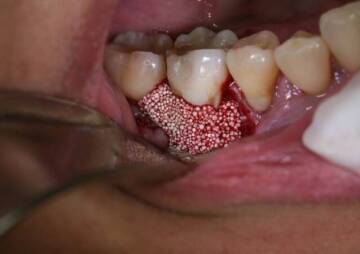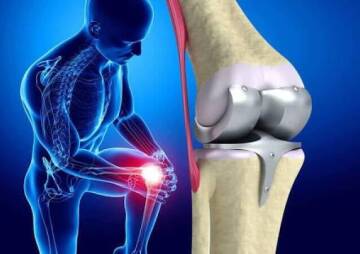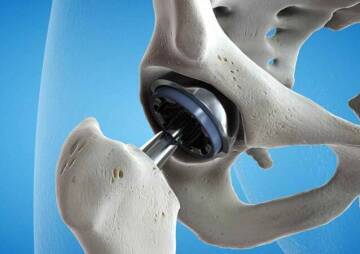-
Category
Craniomaxillofacial Surgery
Orthopedic Surgery
Spine Surgery
Orthopedic Implants
Hip Surgery
Knee Surgery
Pectus Excavatum
Bone Graft
Disinfectants
Healthcare
How Well Do You Know About Different Types of Orthopedic Plates?

Orthopedic plates are classified into different types based on structure and function, such as Buttress plates, Neutralization plates, Bridging plates, Dynamic Compression Plates (DCP), and so on. For your use, the details of each of these plates are given in the following sections of this article.a
Mild pain in any part of the body can interrupt daily life. Assume the pain is caused by a fractured bone, joint damage caused by a condition like arthritis, or a bone problem caused by accident. Before bone plates came to help, all of these conditions were a significant issue for doctors and patients. Internal fixation of fractures is done using bone plates. The plate is fixed to the bone by applying screws on both sides of the fracture. The use of orthopedic implants to fix long bone fractures dates back to 1886, which was a significant breakthrough in the orthopedic field. Over time, remarkable advancements in medicine and implant technology have resulted in the emergence of different types of orthodontic plates. How well do you recognize the different types of orthopedic plates? Stay with us until the end of the article to get detailed information about implants before you purchase.
What Are The Best Types of Orthopedic Plates, And What Are Their Applications?
The main application of orthopedic plates and screws is fixation. But what is fixation? Bone fracture fixation is a technique that uses plates to stabilize the fractured bone, allowing it to heal faster and return to early mobility and full function more quickly. In this method, both sides of the bone are fixed with screws to stabilize the fracture and heal it in proper form. If you want to choose the best and practical fracture plate, you should consider these features:
- The plate's thickness and width should be proportional to the broken bone;
- Neutralize all forces on fractures, such as bending, compression, shear, and torsional forces;
- Hold both sides of the fracture symmetrically and with sufficient pressure;
- It should be closed into the contour of the bone;
After going through these features, it's time to learn about the different types of orthopedic plates and determine which ones are best for you. Before you know about the various forms of orthopedic plates and screws, keep in mind that these are not the same as orthopedic implants. While bone plates are often used to repair fractures, implants or prostheses are artificial joints that are most widely used in the knee and hip. There are different types of plates in terms of structure and function, differentiating their performance in various situations.
Visit our products: Health News Center’s Orthopedic Implants
Orthopedic Plates Classification In Terms Of Structure

There are various surgical plates in terms of structure that you must be thoroughly familiar with to provide the best quality product. These include:
Dynamic Compression Plate (DCP)
This is a standard plate that brings the two edges of the broken bone closer together, allowing them to weld better and faster. The holes of this plate are cylindrical and oblique. When tightening the screw on the plate, the screw head slides in this part and forces the plate to move along the bone, creating a dynamic force on the broken pieces. When the same pressure is applied to the opposite side, it causes the two broken edges to come together and weld properly.
Limited Contact Dynamic Compression plate ( LC_DCP)
These plates are a form of DCP that applies less pressure to the bone surface, reducing damage to the pericytes containing blood vessels in the bone. As a result, the damaged bone's blood flow is restored, allowing for better repair.
Locking Compression Plate ( LCP)
The LCP plate is a modern form of plate fixation that combines locking screw technology with traditional methods. The screw heads lock into the plate, creating a composite unit or "fixed angle device" that differs from standard plates. This composite unit reduces plate-to-bone contact and improves periosteum blood circulation. There are a series of combination holes in these plates, which is why they are called Combination holes.
Also read: Titanium Orthopedic Implants
Orthopedic Plates Classification Based on Function:
There are different types of orthopedic plates, even in terms of function. In other words, for any problem or any bone fracture, surgeons use particular varieties of bone plates. These include:
Buttress plates
These plates have a special structural feature and unique function that bring together fractures at the ends of long bones. Surgeons generally use these plates on body parts such as knees and ankles, where the fracture site experiences a large compression force. These plates are shaped so that they can move with the body; hence these plates are also called the peri-articular plate. There are L-shaped and T-shaped Buttress plates, and 2.5, 3.5, or 4.5 screw sets can be used to fix the plates, depending on the fracture site and the patient's physics.
Neutralization plates
These aren't special plates, but they cover the fracture area and distribute the load evenly around the bone's length. These plates are protected by lag screws from bending and rotation and are used to increase the fixation of the fracture site.
Tension plates
These plates usually are wires that protect the treated area. These cables transform tensile force into compressive force. As a result, the broken bone can withstand forces produced by the plate's conversion of distraction forces.
Bridging plates
These plates are used in multi-fragment fractures of long bones, such as the femur or tibia, and connect two pieces of healthy bone like a bridge. The primary function of these bridging plates is to create a stable condition for the limbs to avoid dislocated and fractured sections, as well as limb deformity. They preserve blood flow to the fractures and help the bone heal faster.
Tubular plates
These plates are approximately 1 mm thick and are mostly used to fix fractures in areas with low soft tissue. And they usually have less stabilizing power compared to other plates.
Reconstruction plates
This plate has deep notches on both sides of the plate and in the middle between two holes. The surgeon can bend the plate in various directions to match it with the anatomical structure of the bone. Few surgeons choose to use these plates because they are less durable than other plates.
Summary
Now that you are familiar with the orthopedic plate types, you can easily and safely purchase them according to your needs. It's important to note that bone plates come in various brands, and you should pay attention to them as well. Each of these plates has a specific use, and surgeons do not use all of them to fix one type of fracture. For example, one type of plate is used to repair long bone fractures, and another type is used to repair fractures near the joints. What types of orthopedic plates do you need? Comment us.
References: surgeryreference.aofoundation.org, orthobullets.com






